I’m just back from an exciting, long weekend of birding in far eastern Nepal, right on the Indian border. So now’s the time for a few quick catch-up blogs before I write about what we saw there.
It is already over three weeks ago that Andrew Broan and I traveled from Pokhara to Chitwan National Park for four nights in a nice eco-lodge. We took a tourist bus; at just over 90 miles, it took 5 hours and 15 minutes, including two 20-minute restaurant breaks. At our first break, House Swifts were nesting in the eaves.
We arrived at Sapana Village Lodge, located at the edge of the major tourist town of Sauraha. There are dozens of hotels, lodges, and guesthouses right in town, but none within the forest of Chitwan National Park any more (they were outlawed and several removed a few years ago). It would have been nice to be located in the middle of great habitat, but I was grateful to not be in the noisy town, instead surrounded by farmland and on the edge of a small tributary of the East Rapti River.
Elephant rides into the national park are a huge attraction for tourists here, and two adults and a juvenile were housed right next to our lodge.
Elephants take a lot of time and attention; they have to be fed, cleaned (in the river), and kept active, so it was common to see them walked about or ridden by their caretakers every day.
There were plenty of birds to keep me occupied within a few hundred yards of our hotel during the times that I wasn’t in the national park. This is Plain Prinia.
Cattle Egret – the subspecies coromandus from the Indian subcontinent to Australia has much more color in the head and neck.
Blyth's Reed-Warbler – an abundant wintering bird here, many seen in all kinds of habitat, but very shy, always moving, and nearly impossible to photograph.
We passed many rice paddies and fields of corn and other crops. Here is a typical farmyard with water buffalos, rather than cattle. (Cows are protected in Nepal, and killing them is a felony; buffalos, however, are fair game.)
We had a few interesting wildlife sightings, including a Jackal on a back road, quietly slinking off into a corn field. Our guide had seen dozens of Bengal Tigers but this was his second or third Jackal ever. We also heard a loud “mew!” reminding me of Green-tailed Towhee, but our guide thought it was a frog, perhaps being eaten by a snake. In short time I spotted this Ptyas mucosa, Indian Rat Snake in the rice with a frog in its mouth.
The next day, right next to our hotel I discovered two males of the same species in a fight of dominance. It was an amazing performance to watch.
On another walk that Andrew and I took into town, I found this small snake, Oligodon arnensis, Common Kukri. It’s totally harmless, but I didn’t know that until I was able to look it up online, so I judiciously snapped a couple photos of it escaping rather than holding it in my hand.
This Danaus chrysippus, Plain Tiger is a relative of the Monarch, and indeed it was laying its eggs on a member of the milkweed family.
Its host was Calotropis gigantea, a widespread tropical species that I’ve seen in Jamaica and Indonesia.
Its host was Calotropis gigantea, a widespread tropical species that I’ve seen in Jamaica and Indonesia.

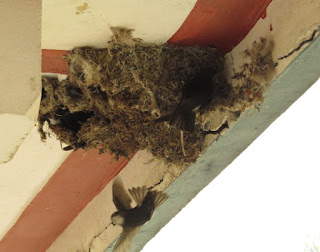













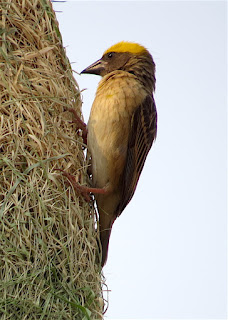

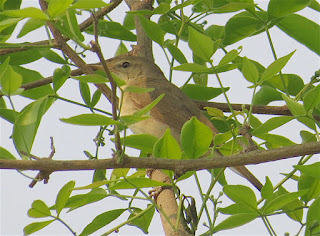



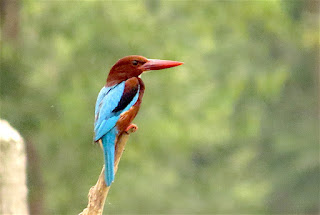









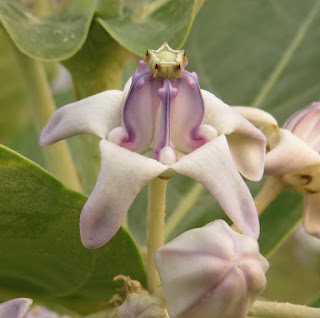





No comments:
Post a Comment